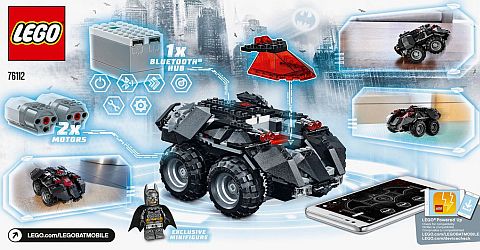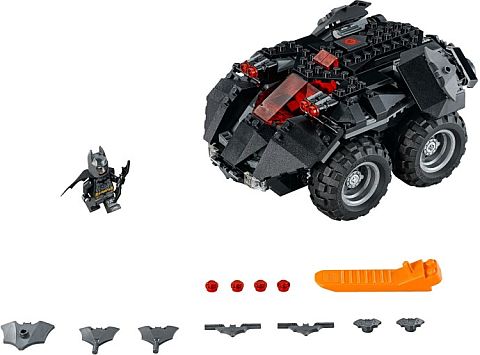While the #21313 LEGO Ideas Ship In A Bottle is certainly a great looking set, it is also sort of cheating. Traditional ship-in-a-bottle models are constructed by squeezing components through the mouth of the bottle, then carefully assembling them with long tweezers and other special tools inside the bottle. The LEGO Ideas Ship In A Bottle doesn’t have a functioning open mouth, instead, the ship and the bottle are built separately, then the ship is sealed inside the bottle. The finished set is a beautiful display model, but it might also leave you with the nagging feeling that it’s not a true ship in a bottle, and there is some cheating involved. 🙂
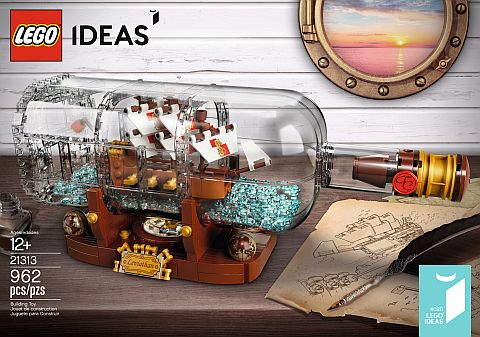
However, there is nothing to stop you from building LEGO ships in a real bottle. All you need is an empty bottle, a small LEGO set, tweezers a steady hand, and lots of patience. Take a look at the examples below by LEGO fan RobRam87, who specializes in assembling LEGO Star Wars Microfighter sets inside clear glass bottles.
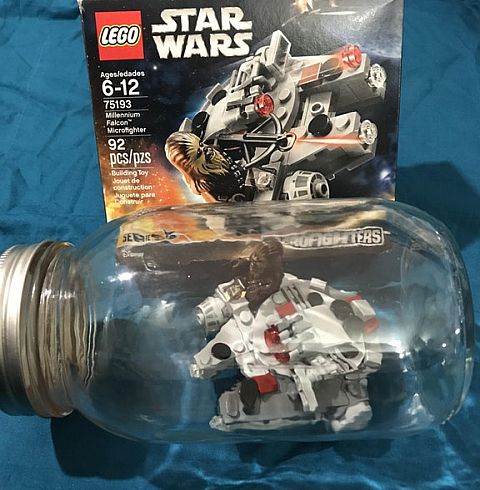
RobRam87 shares that he uses tweezers and reverse tweezers to assemble the sets inside the bottle, and it takes him about 4 hours to finish a project. No glue or other adhesive is used in the construction process, only carefully pushing pieces together and snapping elements in place inside the bottle with various tools.
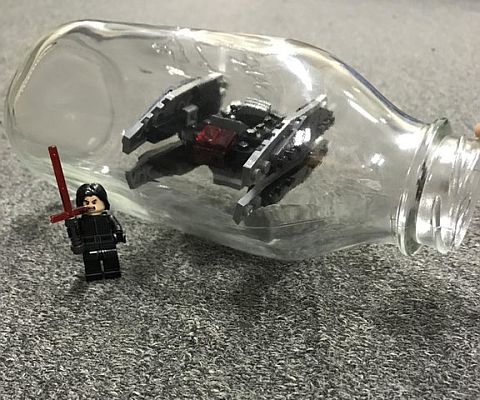
A somewhat similar building process LEGO fans sometimes like to challenge themselves with is to build small LEGO sets inside their original bag. Bags are flexible, so you can manipulate the pieces inside with your fingers, however the bags usually have graphics printed on them, which limits the visibility of the pieces. When you are working with a bottle, you can see inside clearly, but due to the rigidity of the bottle you can’t use your fingers to snap together pieces. Read more about build-in-the-bag projects here: The LEGO Build-In-The-Bag Challenge
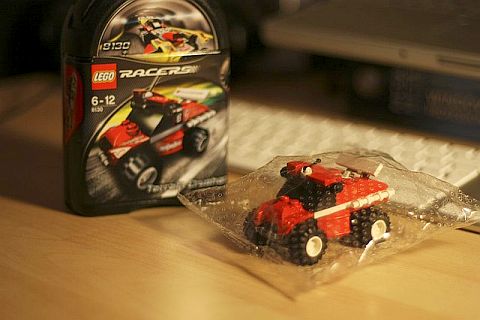
If you are interested to build your own LEGO ship-in-a-bottle, remember that you need a bottle that has a large enough mouth to squeeze through the largest piece in the set of your choice. In the first picture, RobRam87 is using a small jar with a fairly wide opening. It’s a good idea to start with a bottle like this for practice. Once you are proficient, you can start experimenting with bottles with smaller mouths. RobRam87 mentions that it took him an hour just to assemble a single wing of the second model due to the much smaller opening.

As far as which LEGO sets to use to build in a bottle, LEGO Star Wars Microfighters are an obvious good choice, so are sets from the LEGO Super Heroes Mighty Micros series. However, you can choose any small set, or part of a set, from any other line. The little ship from #21313 LEGO Ideas Ship In A Bottle is another great candidate, along with other micro ships, vehicles, and buildings. As long as the assembled model fits in the bottle, and as long as the largest piece will fit through the mouth of the bottle, you should be good to go. And, you can even take the challenge to the next level by designing and building your own custom creation inside a bottle.

Another fun activity is to add other models and set up different scenes inside the bottle from the #21313 LEGO Ideas Ship In A Bottle. We have discussed some ideas here: Fun with the LEGO Ideas Ship In A Bottle
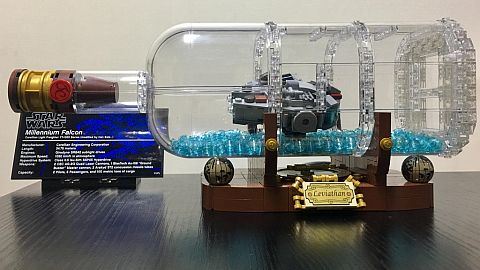
What do you think? Have you ever built a LEGO set inside a bag or bottle? How was your experience? And if you haven’t done it yet, would you give it a try? Do you have the LEGO Ideas Ship In A Bottle set? Have you thought about customizing it with other models inside? Feel free to share and discuss in the comment section below! 😉
And you might also like to check out the following related posts:





